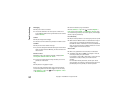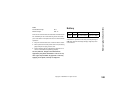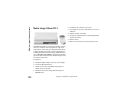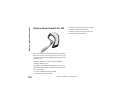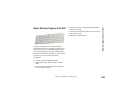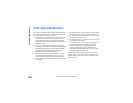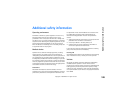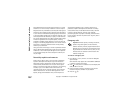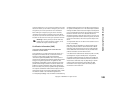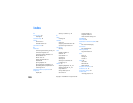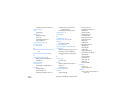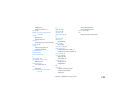
Additional safety information
107
Copyright © 2006 Nokia. All rights reserved.
Only qualified personnel should service the device, or install
the device in a vehicle. Faulty installation or service may be
dangerous and may invalidate any warranty that may apply to
the device. Check regularly that all wireless device equipment
in your vehicle is mounted and operating properly. Do not store
or carry flammable liquids, gases, or explosive materials in the
same compartment as the device, its parts, or enhancements.
For vehicles equipped with an air bag, remember that air bags
inflate with great force. Do not place objects, including
installed or portable wireless equipment in the area over the
air bag or in the air bag deployment area. If in-vehicle wireless
equipment is improperly installed and the air bag inflates,
serious injury could result.
Using your device while flying in aircraft is prohibited. Switch
off your device before boarding an aircraft. The use of wireless
teledevices in an aircraft may be dangerous to the operation
of the aircraft, disrupt the wireless telephone network, and
may be illegal.
Potentially explosive environments
Switch off your device when in any area with a potentially
explosive atmosphere and obey all signs and instructions.
Potentially explosive atmospheres include areas where you
would normally be advised to turn off your vehicle engine.
Sparks in such areas could cause an explosion or fire resulting
in bodily injury or even death. Switch off the device at
refuelling points such as near gas pumps at service stations.
Observe restrictions on the use of radio equipment in fuel
depots, storage, and distribution areas, chemical plants or
where blasting operations are in progress. Areas with a
potentially explosive atmosphere are often but not always
clearly marked. They include below deck on boats, chemical
transfer or storage facilities, vehicles using liquefied
petroleum gas (such as propane or butane), and areas where
the air contains chemicals or particles such as grain, dust or
metal powders.
Emergency calls
Important: Wireless phones, including this device,
operate using radio signals, wireless networks,
landline networks, and user-programmed functions.
Because of this, connections in all conditions cannot
be guaranteed. You should never rely solely on any
wireless device for essential communications like
medical emergencies.
To make an emergency call:
1 If the device is not on, switch it on. Check for adequate
signal strength.
Some networks may require that a valid SIM or USIM card
is properly inserted in the device.
2 Press as many times as needed to clear the display and
ready the device for calls.
3 Enter the official emergency number for your present
location. Emergency numbers vary by location.
4 Press the key.



